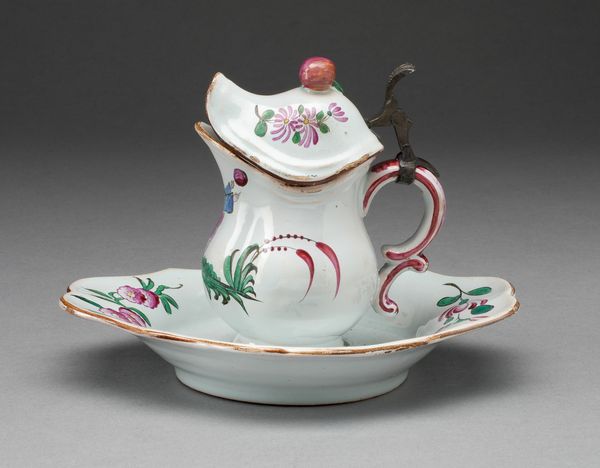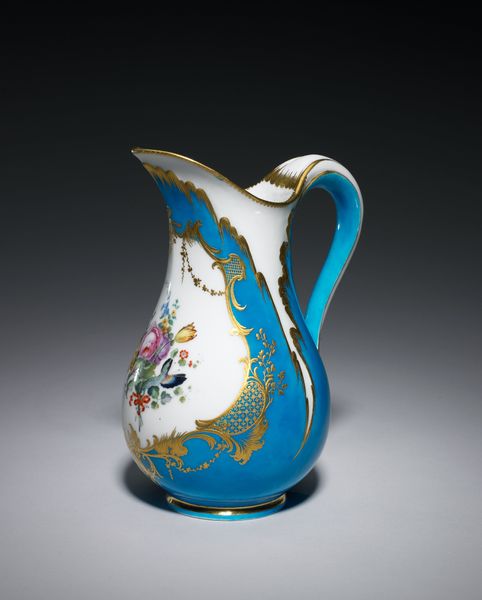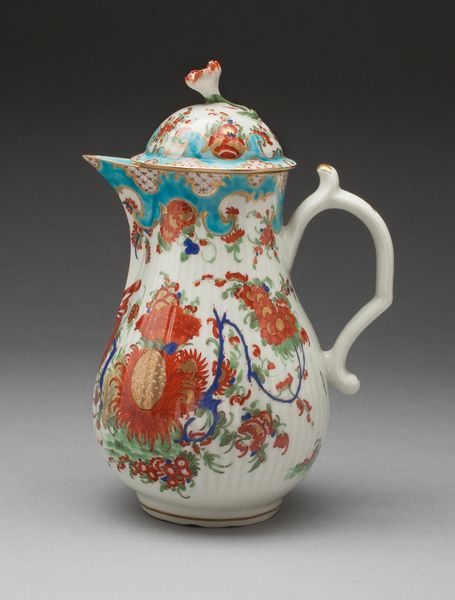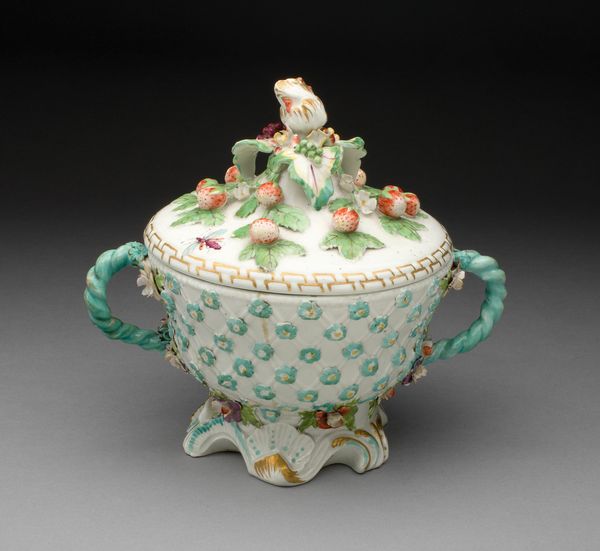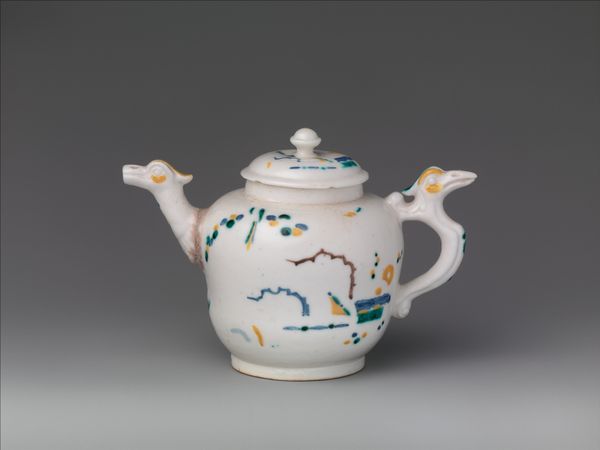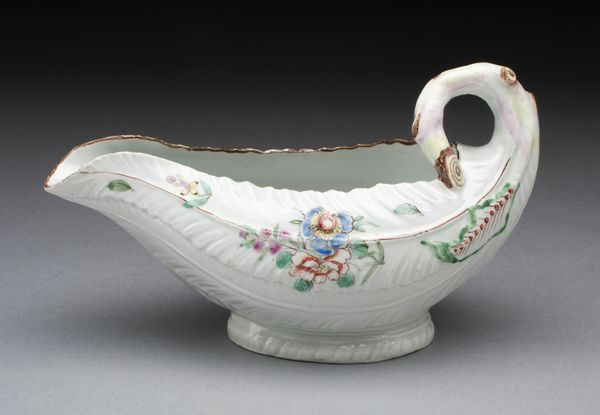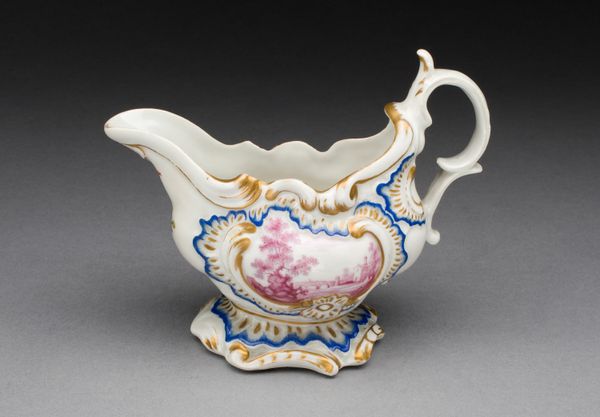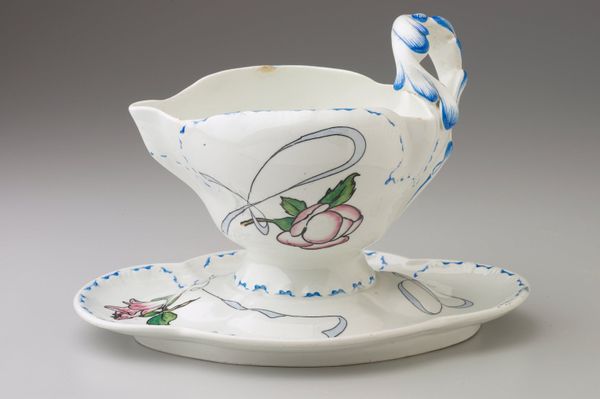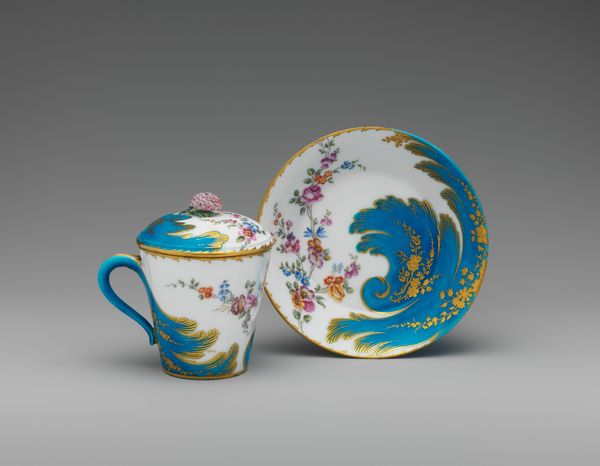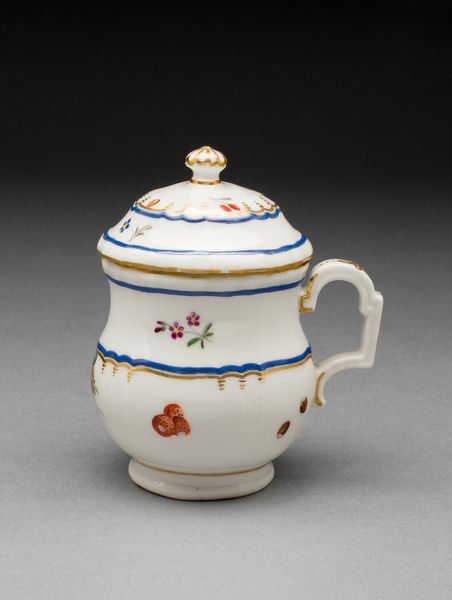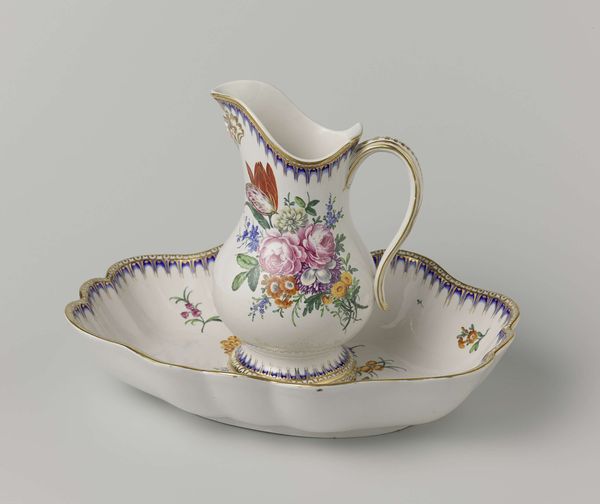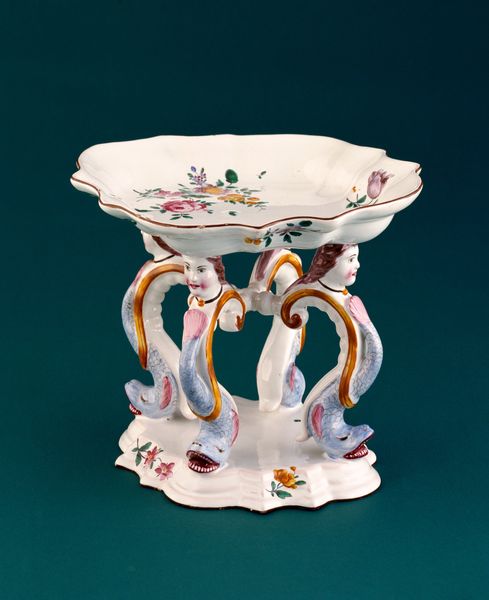
Ewer and basin (pot à la Romaine uni et jatte ovale) 1754 - 1755
0:00
0:00
ceramic, porcelain, sculpture
#
ceramic
#
flower
#
porcelain
#
sculpture
#
decorative-art
#
rococo
Dimensions: Height (ewer .177): 9 3/8 in. (23.8 cm); Overall (basin .178): 14 3/8 × 10 1/8 in. (36.5 × 25.7 cm)
Copyright: Public Domain
Editor: This is the Ewer and Basin, made between 1754 and 1755 by the Vincennes Manufactory. It's porcelain, and the rococo style really jumps out. It feels incredibly delicate, but the implied opulence also strikes me. What kind of societal contexts were at play with an object like this? Curator: Exactly. Think about the French court at Versailles—the reign of Louis XV. This isn't just decorative art; it's a cultural artifact steeped in the politics of its time. Rococo, with its emphasis on asymmetry, curves, and ornamentation, reflects the aristocracy's detachment from the realities faced by the common people. Editor: So the beauty is almost a…distraction? Curator: It's more complex than that. Porcelain itself was a highly prized material, almost exclusively available to the elite. Owning such pieces reinforced social hierarchies and signaled one's position within that structure. But also, think about who made these pieces, mostly women: porcelain painters like Marie-Thérèse Reboul. Their creative output also existed within these restrictive power dynamics. Does that change how you view it? Editor: It makes me consider who was allowed to create beauty, and who was allowed to own it. The flowers, too, almost feel symbolic, like coded messages within the broader decorative scheme. Curator: Precisely. These floral motifs weren’t arbitrary, often carrying symbolic weight related to courtship, virtue, or societal values. Seeing these items through an intersectional lens really highlights the multifaceted nature of art. Editor: I see it! Considering these artworks within historical, social, and even gendered narratives unveils their layered meanings. Thank you. Curator: And for me, your perspective enriches the way that I think about gendered labour practices in the decorative arts of the 18th Century!
Comments
No comments
Be the first to comment and join the conversation on the ultimate creative platform.
